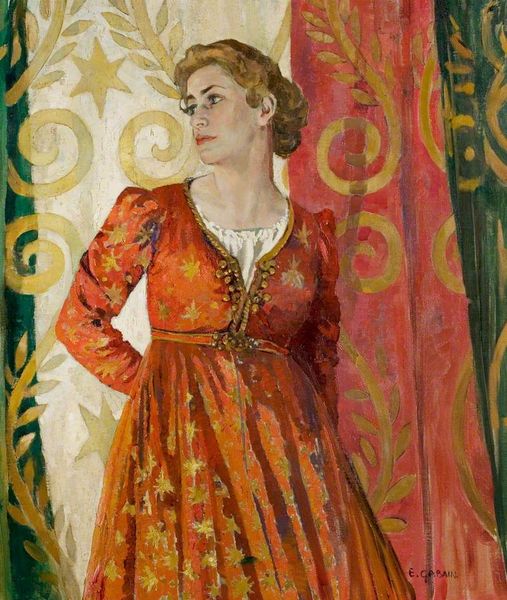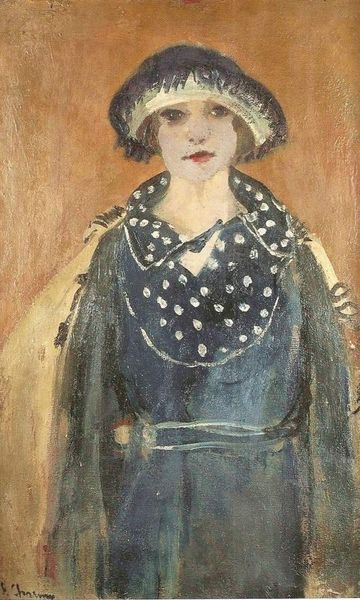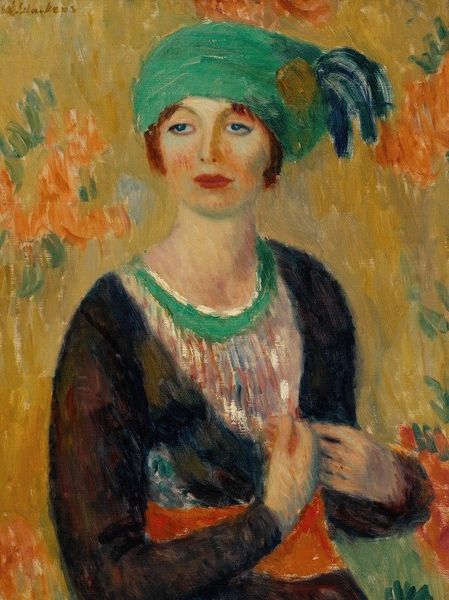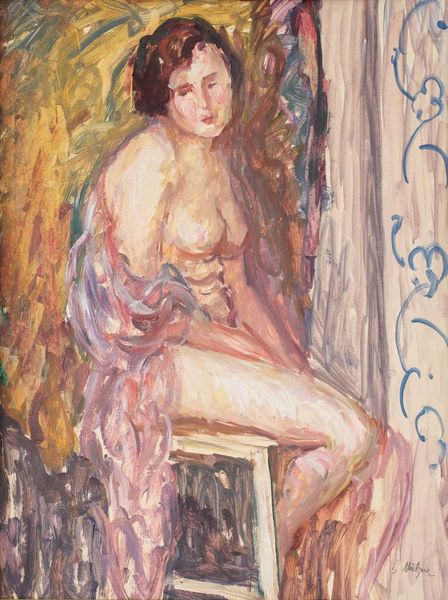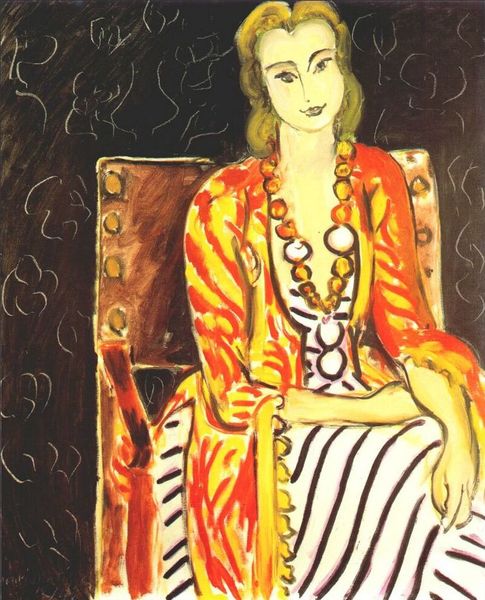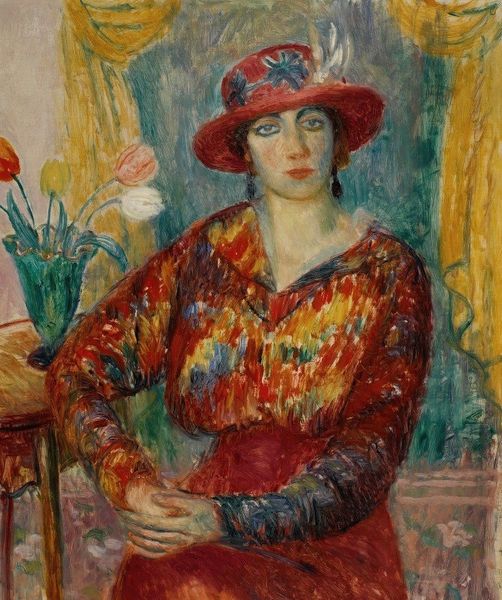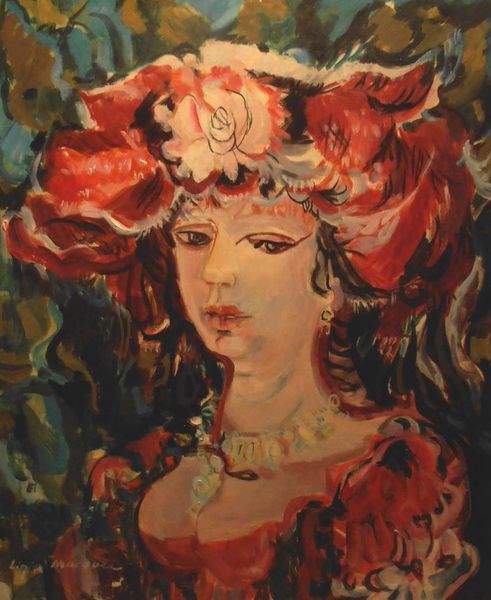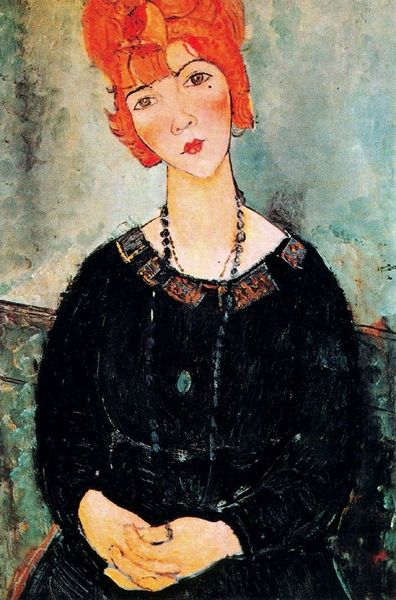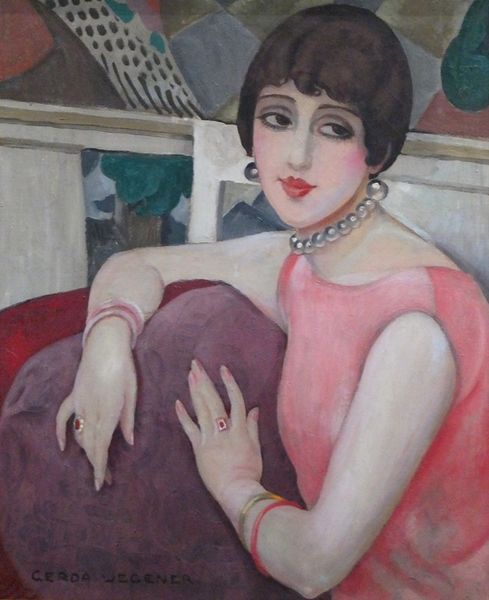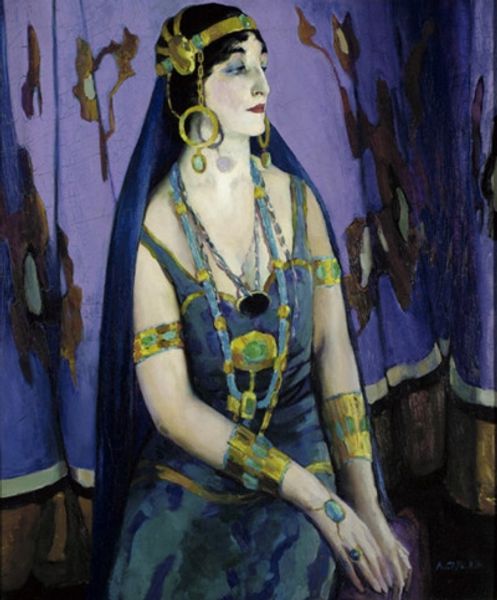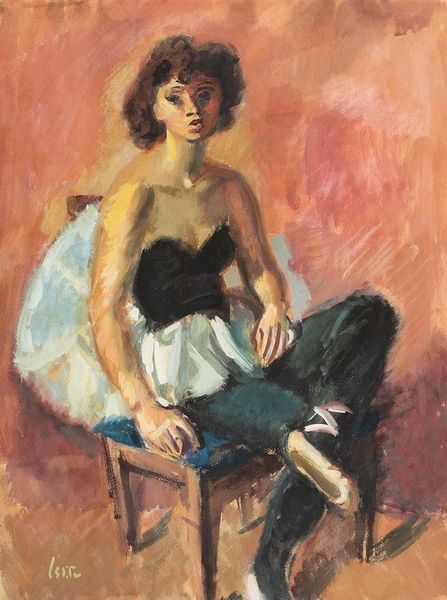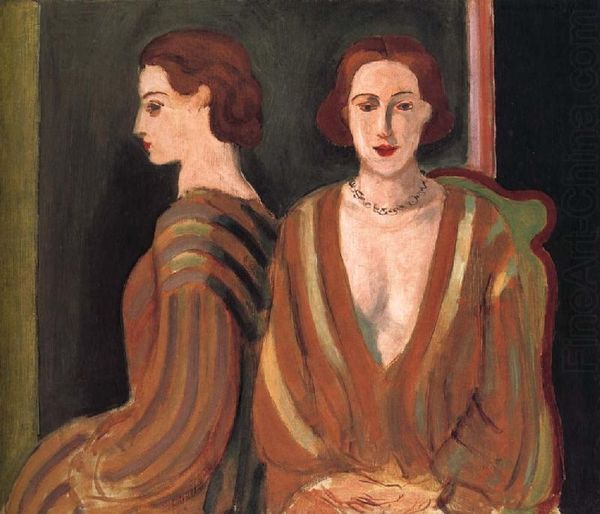
Copyright: Public domain
Curator: Here we have Ethel Léontine Gabain’s striking portrait of "Miss Flora Robson as Lady Audley," painted in 1933. What leaps out at you? Editor: That incredible red hair, for starters. It's like a bonfire atop her head, an explosion of flamboyant curls and impasto paint. I find her eyes really piercing, an unsettling calm there. What do you make of that stillness? Curator: Well, Gabain, quite brilliantly I think, captures the essence of Lady Audley, the famously duplicitous character from Mary Elizabeth Braddon’s sensation novel. Everything about Lady Audley is performative and calculated, to create an appearance of serene beauty that hides a darkness. The eyes do it, don't they? That and the jewellery; a display of wealth that might imply good breeding when that's simply untrue. Editor: It's the mask of femininity, almost a costume. I’m so drawn to how that weighty necklace both adorns and perhaps entraps her. Notice also the almost theatrical backdrop of heavy drapery? Are those shadows hinting at hidden depths, Curator? Curator: I suspect so. The darkness in that drape hints at secrets, hidden truths within Audley’s character. I notice that Gabain renders every detail from the flamboyant hairstyle to the intricate gown with a distinct impasto effect, each daub a building block in the Lady’s edifice of appearance. But notice her hand is a little too adorned - does the painting, as a work of iconography, propose vanity, guilt, or entrapment? Editor: Probably all three! Perhaps it speaks to the broader symbolism of beauty, facade and control that reverberated during that period. And of course it reflects back on ideas around theatricality - how appearance mediates identity for the individual in the crowd. Curator: Exactly. A character study in oils reflecting real world concerns. This image will certainly linger. Editor: It does indeed, prompting so many delicious questions about who we really are.
Comments
No comments
Be the first to comment and join the conversation on the ultimate creative platform.
